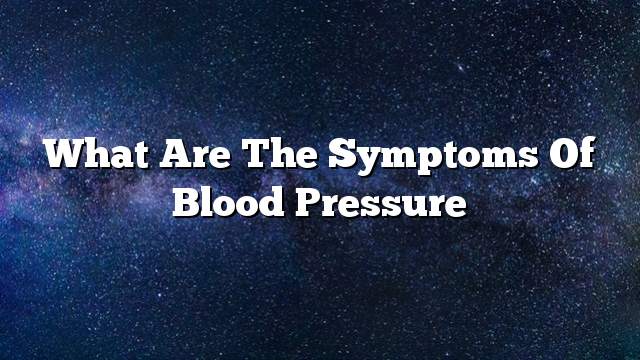blood pressure
Blood pressure is the force of blood on the walls of the blood vessels through which to transport all the tissues and organs of the body in the so-called circulatory system, and start blood circulation contraction of the heart muscle to push blood full contents from the heart to the aorta and then to the rest of the arteries, and then simplify the heart to be filled again with a new quantity Of the blood, then contract again and so, it is worth mentioning that the normal rate of blood pressure is 120/80 mmHg.
Hypertension
Hypertension is a common disease related to heart disease, blood vessels, and kidneys. The person has high blood pressure if he is above the normal rate due to a defect in one of the main factors controlling blood pressure, cardiovascular diseases such as atherosclerosis, nervous system diseases, Hormonal and endocrine diseases, and urinary tract diseases as renal failure.
Need hypertension for treatment
- Blood pressure values that do not need treatment:
- The optimal systolic pressure is 80-118 mmHg, while the diastolic is 50-90 mmHg.
- The normal systolic pressure is 120-129 mmHg, while the diastolic is 80-84 mmHg.
- Normal high systolic pressure is 130-139 mmHg, while diastolic is 85-89 mmHg.
- Value of blood pressure needed for home treatment: In this case it is necessary to change the lifestyle, then take the drug if no improvement within three to six months when the systolic pressure is 140-159 mm Hg, the diastolic 90-99 mm Hg.
- The value of blood pressure that needs medication is: Systolic above 160 mmHg, the diastolic above 100 mmHg.
Symptoms of hypertension
Hypertension is often symptom-free and occasionally discovered, but some symptoms can occur, such as:
- Common symptoms of headaches, dizziness or dizziness, confusion of vision, shortness of breath, feeling of heaviness or inactivity.
- Symptoms of hypotension or failure of the heart muscle, swelling of the lower limbs, rapid heartbeat.
- Symptoms of urinary tract infection and urination of red urine.
- Tinnitus and nose irritation.
Diagnosis of high blood pressure
- Health history, clinical examination, and blood pressure measurement.
- Electrocardiography ECG.
- Chest X-ray.
- CBC blood tests, chemistry, triglycerides, and good and harmful cholesterol.
- Blood tests to detect diseases related to endocrine and kidney enzymes, liver, and heart.
Treatment of hypertension
Change lifestyle
- Regulate meals and reduce protein, sugars, fats, and salts.
- Eat more foods containing potassium, such as bananas and oranges, except for kidney failure. Foods with high potassium and phosphorus content can be eaten.
- Eat more fruits, fresh vegetables.
- Exercise regularly, reduce weight, and stay away from alcohol.
- Minimize stress, by spending alms and doing good.
- Stay away from smoking forever.
The medical treatment
Give the patient antihypertensive drugs and diuretics;
Symptoms of low blood pressure
Low blood pressure is the flow of blood circulation in the body under pressure less than normal pressure, which is not harmful to health only if accompanied by some symptoms, and low blood pressure if the systolic pressure less than 90 mmHg, and diastolic pressure less than 60 mmHg, Symptoms of low blood pressure are as follows
- Feeling dizzy or dizzy and may faint.
- Nausea and vomiting.
- Paleness, coldness and moisture in the skin.
- Feeling thirsty.
- Stress and general weakness.
- Breathe or breathe fast.
- Vision disorder.
- Feeling depressed.
